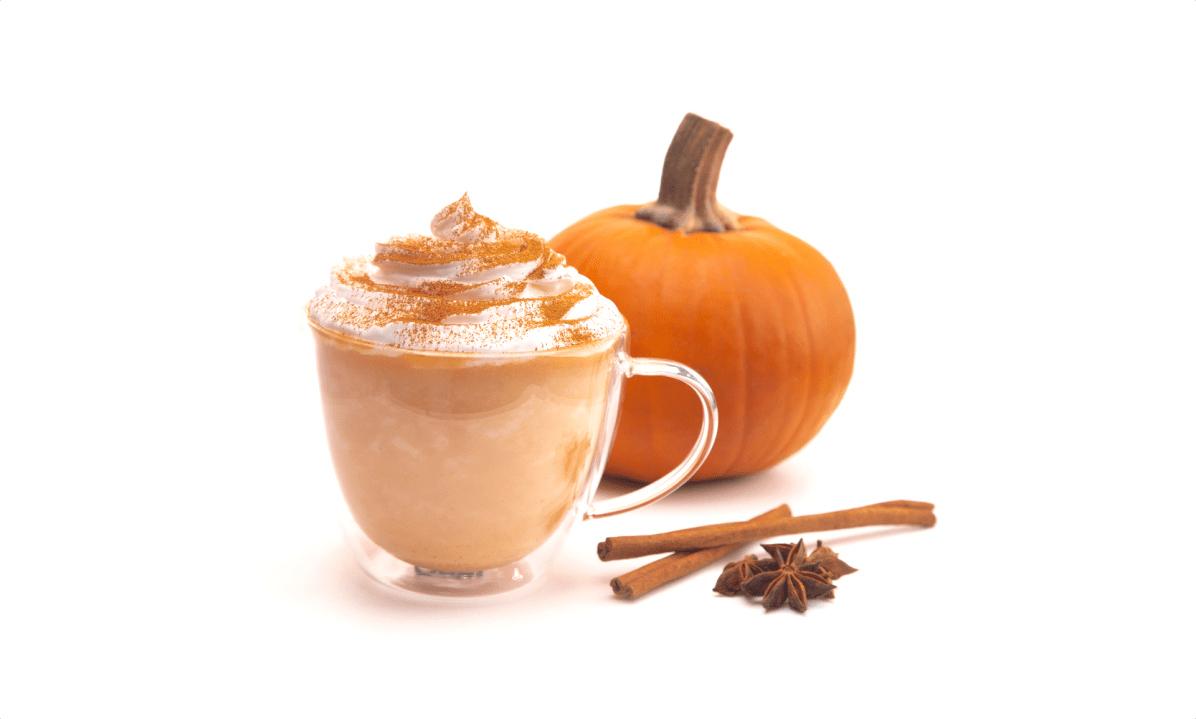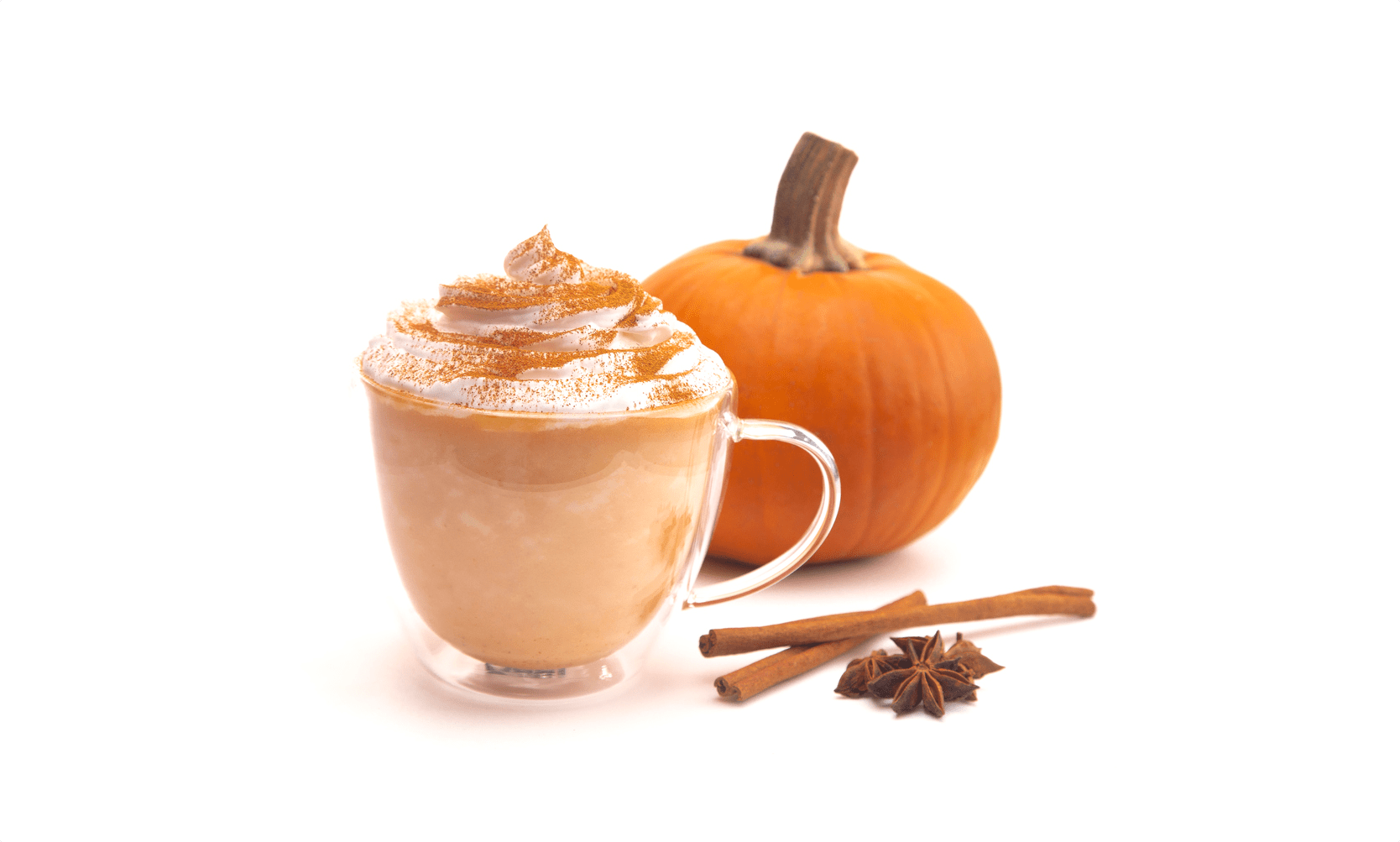It didn’t matter that it was 33˚C. Starbucks staff across Britain spent the beginning of September putting out pumpkin-themed menus, selling customers pumpkin spice lattes in pumpkin-shaped mugs, to be drunk alongside a slice of pumpkin-flavoured loaf cakes, a pumpkin seed cookie, or a brownie cut into pumpkin shapes and frosted in hazardously orange icing. Happy fall, y’all.
The minor humiliations don’t stop me – I’m a creature of nostalgia and these drinks don’t taste bad, either
The hot early autumn didn’t stop us obsessives: there is, inevitably, an iced pumpkin spice latte. The spice mix in question, of cinnamon, ginger, nutmeg, clove and sulphur-based preservatives doesn’t necessarily have to include any pumpkin. Instead, it refers to the spices put into a pumpkin pie. And that tells you something that’s obvious about pumpkin spice: this is an all-American phenomenon.
Your British autumns have nothing on American fall. The two words might conjure up the same crisp mornings or the same ripe, earthy smell of dead leaves, but that’s where the similarities end. Fall means hay bales on the back of pick-up trucks, kids with their moms and dads out trick-or-treating, the brass fanfare of the NFL theme song on Thanksgiving morning. And pumpkin spice means all of that and more.
The word fall is beautifully literal and proudly banal – naturally suited as it is for the nasally, loud vowels of the American accent. If its simplicity is mistaken as a sign of American stupidity, we don’t notice, or at least don’t care.
Fall and its associated products uphold our patriotic commitment to immoderation, even when sold in British shops and restaurants. For example, a grande (16oz) pumpkin spice latte served in a Starbucks here might only contain 39.3 grams of sugar to its American counterpart’s 50 grams, but it’s still packing a hefty hyperglycaemic punch. The British iced variety contains the same amount of calories as nine KitKat fingers.
The idea of an autumnal dose of cinnamon or nutmeg is not terribly original, but few jewels of our culture are. Our genius is commercialising what is sacred to other cultures – like hotdogs from the Germans or democracy from the Greeks.
Fall Inc. has turned the season into a consumer trend, a cable-knit arm of the pumpkin industrial complex. No single product has led seasonal creep quite like the pumpkin spice latte, whose offshoots include pumpkin spice-flavoured dog foods and protein powders and rakes in over $800 million in US sales. The pumpkin spice latte has supplanted the change in the earth’s axis as the authority on when summer ends, pushing it earlier and earlier each year. It’s quite a cultural achievement for the supposedly froufrou drink of basic white girls.
Starbucks cashes in on our wide-eyed obsession (and the huge purchasing power of women, who control or influence 85 per cent of consumer spending in the US). Rather than bootlicking the coffee purists, the company keeps rolling out new drinks each fall with ever more complex flavours and names, like this year’s salted maple and caramel cream cold brew or iced apple crisp oat milk shaken espresso.
I don’t take much pleasure in ordering these Frankendrinks, especially because every word of my embarrassingly long order gets printed onto the side of my cup for all to see. I was once cut off mid-order – the barista could tell from the confused, searching look in my eyes that I, like every other twenty-something female, wanted a grande iced brown sugar oat shaken espresso. Others have not been so merciful when I struggled to remember the name of a seven-word drink.
But the minor humiliations don’t stop me – I’m a creature of nostalgia and these drinks don’t taste bad, either. I am, as Hillary Clinton once declared herself, a ‘pumpkin spice latte kind of gal’. Starbucks could reinvent itself into something cooler and more sophisticated, but why bother, when it’s beloved by those of us who are so happily unironic? Anyway, to dial down the cringe would be un-American.







Comments